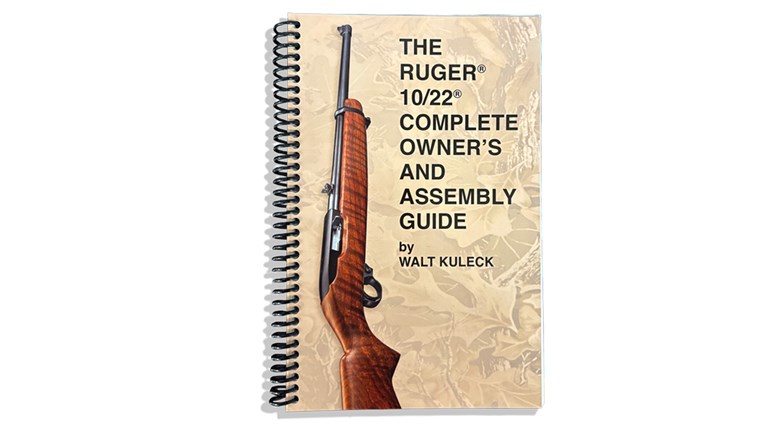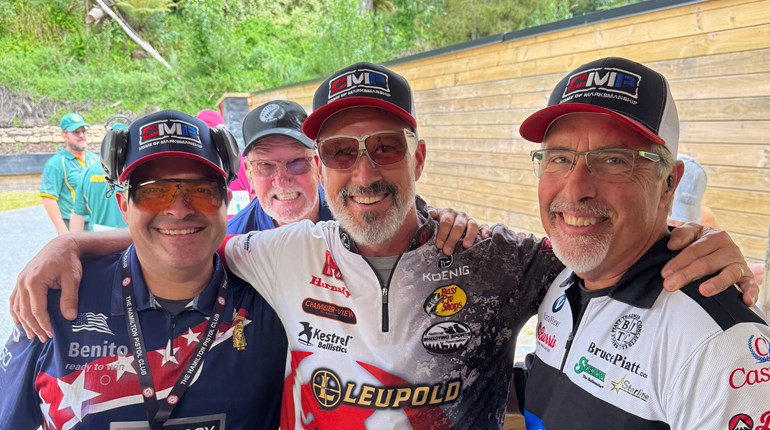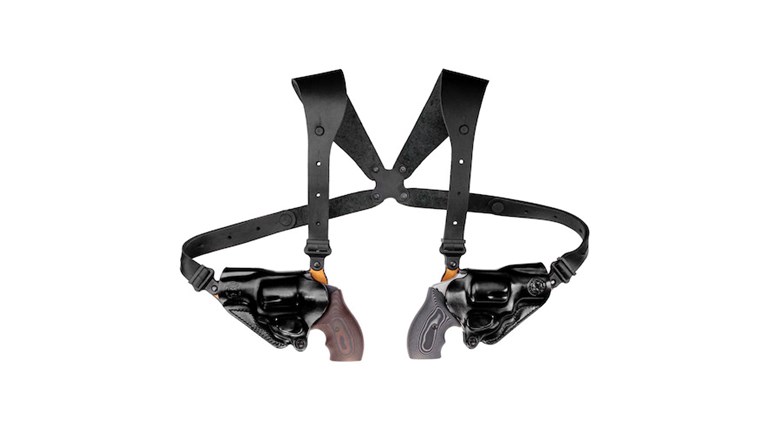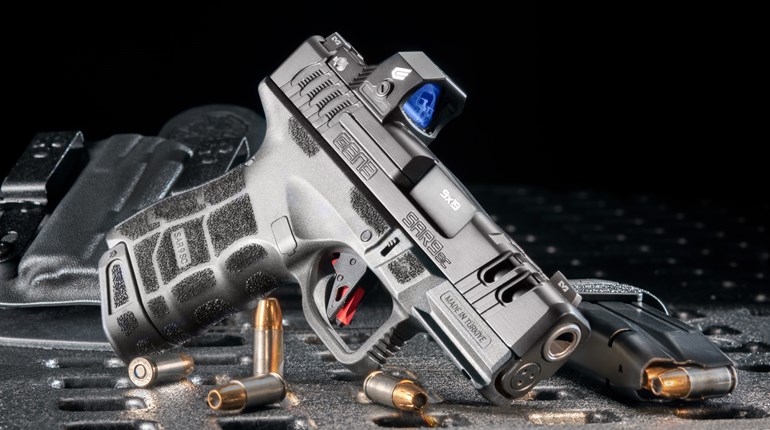
Polymer shell meets aluminum chassis to balance weight and recoil in the LCRx. It features an external hammer and a scalloped cylinder. Ruger LCRx with 1.87 inch barrel.
Those of a certain age, and those in the know, are aware that snub-nosed revolvers have been, and remain, viable daily carry firearms. The Ruger LCRx is one of the newest.
The LCR series from Ruger has a hybrid-frame design. The stainless-steel cylinder is given a PVD coating and has unneeded steel machined off of it, giving the cylinder a sculpted contour. The part of the frame that holds the barrel and contains the cylinder is a monolithic aluminum casting. The barrel is threaded into the frame down the housing, which provides support, while saving weight.

This snubbie LCRx has a barrel that is 1.87 inches long; however, you can also opt for one with a 3-inch barrel. Despite its compact size, the LCRx holds five rounds of .38 Special. It is rated for +P ammunition. Other models of the LCRx are chambered in .22LR, .22 WMR, .327 Federal Magnum, 9 mm and .357 Magnum.
The fire-control parts are housed in a polymer shell bolted to the aluminum chassis of the barrel and cylinder. This polymer allows the LCRx to flex slightly in recoil, saving your hand from that portion of the recoil; as a result, the lightweight LCRx (and all the LCR models) has a softer felt recoil than a similar-weight, all-metal revolver would have.
The trigger-hammer interface has a friction-reducing cam as part of the design. The leverage this provides creates a lighter-weight and smoother trigger pull. It is not uncommon for a double-action revolver to “stack” at the end of the pull, with increased trigger pull weight. The LCR design eliminates that. The “x” of the LCRx model designation is for the external hammer spur. The first LCR models had enclosed hammers, but the LCRx has an exposed spur, which enables you to fire it single-action.

To add to the recoil-softening design, Ruger has installed a Hogue Tamer grip, which is a one-piece molded rubber grip attaching to the polymer portion of the LCRx by the frame’s mounting peg. There are no worries about the grip properly fitting the frame. The mounting-peg idea did not originate at Ruger, but they know a good idea when they see it, and they use it.
Anyone who has ever handled a double-action revolver will be familiar with the cylinder swinging out on the left side to load or unload. It is unlocked for opening by a latch behind the cylinder on the left side of the frame.
The sights on the snub-nosed LCRx are simple. There is a groove in the upper rear of the aluminum portion of the frame assembly that works as a rear sight and a blade pinned to the alumminum housing at the muzzle that’s the front sight. The larger, 3-inch barrel model has an adjustable rear sight.
In testing, the LCRx never failed; however, the ejector rod in the short-barrel model is too short to fully eject cases. This is a situation to be found with all snubbie revolvers. If you want a full-stroke ejector rod, you have to go to a longer barrel, which negates some of the handiness of the revolver in daily carry. There are several methods of ensuring full ejection of empties when using a snubbie, and you will have to use them with the LCRx models that have the 1.87-inch barrels.

Accuracy testing was aided by the option of firing the LCRx single-action. With the loads they like, even snub-nosed revolvers can turn in tight groups. This proved to be the case with this Ruger when loaded with the Hornady Critical Defense ammunition. The Hornady and the SIG were the most modern loads, but I also tested the LCRx with the classic FBI load, a 158-grain, lead, semi-wadcutter hollow point. Fair warning: This load recoils and has a generous amount of smoke. It shoots well, though, and if you are a fan of heavy bullets, this is one you should look at.
 The Ruger LCRx does not lack for holster choices. If a holster maker produces models for revolvers, you will be able to find one to fit your LCRx. And, due to its compact size and light weight, every location for carry, from your shoulders on down to your ankles, will be a viable option.
The Ruger LCRx does not lack for holster choices. If a holster maker produces models for revolvers, you will be able to find one to fit your LCRx. And, due to its compact size and light weight, every location for carry, from your shoulders on down to your ankles, will be a viable option.
Some might think that five shots aren’t enough, but the Ruger LCRx is no larger than ultra-compact 9 mm pistols that only hold six rounds. And, as a point for revolvers, they do not depend on magazines, or magazine springs, to function; they just rely on your trigger finger.


































